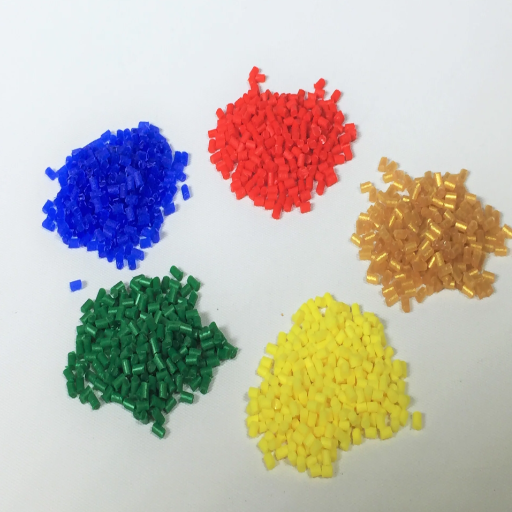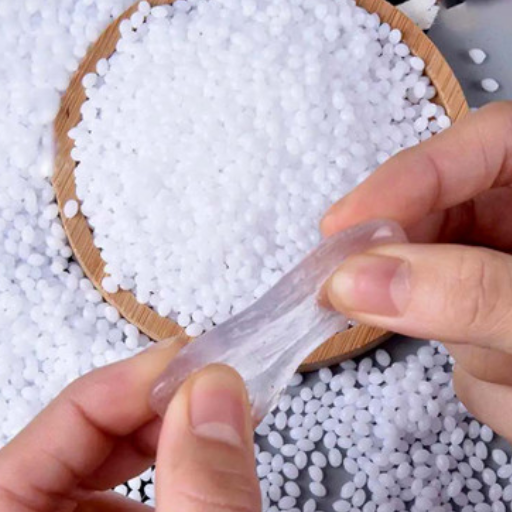Plastic has become an indispensable part of our daily lives, shaping countless industries and products, yet its origin and classification often spark questions. Is plastic truly a natural resource, or is its connection to natural materials more complex than it seems? This blog dives deep into the origins of plastic, exploring its foundation in nature-based sources like crude oil, natural gas, and even plant-based alternatives. We will unravel the process of transforming these raw materials into versatile polymers, examine the environmental implications of production and consumption, and highlight the difference between conventional plastics and bio-based innovations. By understanding the intricate relationship between plastic and natural resources, readers will gain valuable insights into how this ubiquitous material fits into the broader conversation on sustainability and resource utilization.
What is the origin of plastic and how is it made?
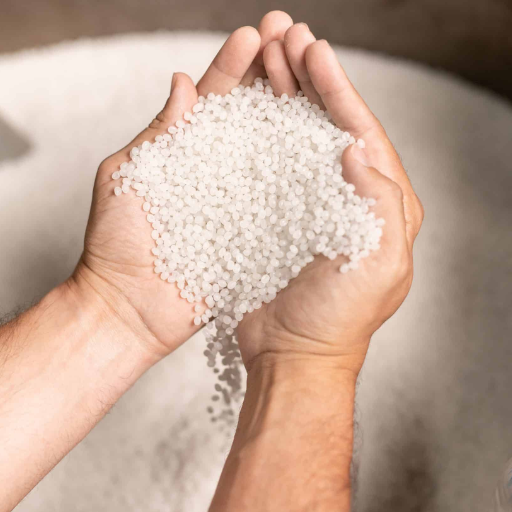
Plastics originate from natural resources such as crude oil, natural gas, and, more recently, renewable materials like corn or sugarcane. The process begins with the extraction and refinement of these raw materials to create monomers, which are small, simple molecules like ethylene or propylene. Through a process called polymerization, these monomers are chemically bonded to form long, repeating chains known as polymers. These polymers serve as the foundation for a wide variety of plastic products, molded or shaped to meet diverse needs across industries.
Understanding the production of plastic from crude oil and natural gas
Crude oil and natural gas are the primary raw materials used in plastic production due to their high hydrocarbon content. The process begins by separating these hydrocarbon compounds during refining. Crude oil undergoes distillation to produce naphtha, a key component for making plastics, while natural gas is processed to yield methane, ethane, propane, and butane.
Through a process called cracking, these hydrocarbons are broken into smaller units, generating monomers like ethylene and propylene. These monomers are then transformed into polymers through polymerization. The resulting polymers, such as polyethylene and polypropylene, are used to create a wide range of plastic products. This complex but efficient process highlights the critical link between fossil fuels and modern plastic manufacturing.
The role of petroleum in plastic manufacturing
Petroleum plays a fundamental role in plastic manufacturing as the primary feedstock for producing key raw materials like ethylene and propylene. These hydrocarbons are derived from crude oil and natural gas through processes such as refining and cracking. The extracted monomers are polymerized to form essential plastics like polyethylene, polypropylene, and polystyrene, which are used in countless everyday products, from packaging to electronics. This reliance on petroleum highlights its critical influence in the production process, though it also raises concerns about environmental sustainability and dependence on finite fossil resources.
Exploring the process of creating synthetic polymers
Synthetic polymers are created through a series of chemical processes that begin with the extraction and preparation of monomers, which are small, reactive molecules. The most common methods for polymerization are addition polymerization and condensation polymerization.
Addition Polymerization: This process involves the repetitive addition of monomers with double or triple bonds to form long chains. For example, ethylene can polymerize to create polyethylene through this method, which requires heat, pressure, and a suitable catalyst.
Condensation Polymerization: Unlike addition polymerization, this method involves the combination of monomers with the elimination of small molecules such as water or alcohol. This process is used to create polymers like nylon or polyester.
Once polymerized, the synthetic polymers undergo various finishing processes, such as extrusion, molding, or shaping, to meet specific industry requirements. The entire production process highlights both the versatility and efficiency of polymer engineering, while also calling attention to ongoing challenges like waste management and reducing the dependency on fossil fuels for monomer production.
Are there any natural resources used in plastic production?

Certainly, natural resources are important in the making of plastics. Crude oil and natural gas serve as the base raw materials for extracting various monomers, like ethylene and propylene, which in turn gives birth to a multitude of plastics. Besides, some bioplastics are produced from renewable sources such as corn, sugarcane, or other plant-based raw materials. The resources mentioned above are crucial for the process of producing polymers while at the same time confirming the importance of sustainable procurement and development practices in the plastics sector.
Examining the use of organic matter in plastic manufacturing
Organic matter plays a crucial role in the development of both conventional plastics and bioplastics. Traditional plastics are primarily derived from fossil fuels, a non-renewable organic resource. However, the growing demand for sustainable alternatives has expanded the use of renewable organic materials in the industry. For example, bioplastics are created from plant-based feedstocks such as corn starch, sugarcane, and agricultural byproducts. These materials are broken down into bio-based monomers like polylactic acid (PLA) or polyhydroxyalkanoates (PHA) during production.
The incorporation of organic matter in plastic manufacturing offers significant environmental benefits, such as reducing reliance on petroleum and lowering greenhouse gas emissions during production. Additionally, many bioplastics are designed to be biodegradable or compostable, easing concerns about plastic waste accumulation. However, challenges persist, including land use competition for crops and the energy-intensive processing required for some bio-based plastics. Despite these hurdles, advancements in technology continue to optimize the integration of organic matter, promising a more sustainable future for the plastics industry.
Investigating renewable materials in plastic production
Renewable materials in plastic production generally stem from biological sources, such as corn, sugarcane, or algae, which are converted into bioplastics. These materials aim to replace fossil-based plastics, reducing reliance on finite resources and lowering carbon emissions. Common examples include polylactic acid (PLA) derived from fermented plant starch and polyhydroxyalkanoates (PHA) produced by microbial fermentation. The environmental benefits of renewable materials are significant, as they are often biodegradable or recyclable, decreasing plastic waste.
However, challenges remain in scalability and production efficiency. Growing crops for bioplastics competes with food production for land and water, raising sustainability concerns. Additionally, not all bioplastics are created equal—some require specific conditions to biodegrade, and others might still release microplastics. Companies and researchers are addressing these issues by developing innovative materials, like seaweed-based plastics or blends incorporating agricultural residues, to strike a balance between performance and environmental impact.
How does plastic compare to traditional natural resources?
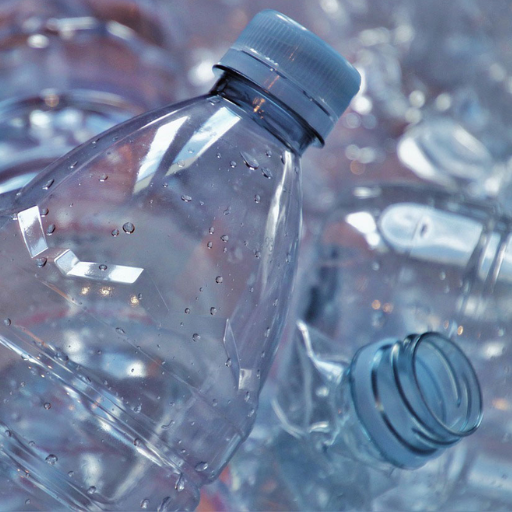
Plastics differ significantly from traditional natural resources in terms of origin, processing, and longevity. Unlike natural resources such as wood, cotton, or clay, plastics are predominantly derived from fossil fuels, involving energy-intensive extraction and chemical processing. Plastics offer unmatched versatility, durability, and lightweight properties, making them ideal for various applications. However, traditional natural resources are often more biodegradable and environmentally friendly across their lifecycle. While plastics excel in efficiency and cost-effectiveness, their environmental persistence and pollution potential create challenges that natural materials rarely present. Striking a balance between utility and sustainability remains a key focus in comparing these materials.
Contrasting plastic with other natural materials
Advantages of Plastic Over Natural Materials
Plastics outperform many natural materials in terms of durability, lightweight properties, and resistance to environmental factors like moisture and chemicals. Their versatility allows them to be molded into complex shapes, enabling widespread use in industries such as automotive, construction, and medicine. Additionally, plastics are often more cost-effective to produce and transport, thanks to their scalability and low weight.
Challenges and Environmental Considerations
Despite their advantages, plastics pose significant environmental concerns due to their long degradation timelines and contribution to pollution. Unlike natural materials, which are typically biodegradable and renewable, plastics often require extensive recycling systems that are not universally accessible. These challenges have driven research into alternatives like bioplastics and enhanced recycling methods to bridge the gap between convenience and sustainability.
Striking the Balance
To address these issues, industries are exploring innovative solutions such as combining plastics with biodegradable components or improving the efficiency of circular economies. By integrating the best aspects of both plastic and natural materials, we can aim for a future that meets human needs dynamically while minimizing long-term environmental harm.
Exploring the environmental impact of plastic vs. natural resources
The environmental impact of plastics is profound, primarily due to their non-biodegradable nature. Plastics take hundreds, if not thousands, of years to decompose, contributing to widespread pollution in oceans, soils, and ecosystems. They are derived from fossil fuels, which require significant energy during production and emit greenhouse gases, exacerbating climate change. Furthermore, microplastics pose a serious threat to wildlife and human health by entering food chains and water supplies.
Natural resources, such as wood, bamboo, and cotton, often present a more sustainable alternative due to their biodegradability and lower energy consumption during production. However, large-scale harvesting of natural materials can also lead to deforestation, habitat destruction, and overuse of water. For example, while cotton is biodegradable, its cultivation requires substantial water and pesticide use, which can strain ecosystems.
A balanced solution lies in understanding the intended purpose and lifecycle of materials. For long-lasting products, thoughtful use of recycled plastics can reduce overall waste, while natural materials remain ideal for items where biodegradability is essential. Ultimately, we must innovate and adopt responsible production methods to mitigate the drawbacks of both plastic and natural materials.
What are the different types of plastics and their sources?
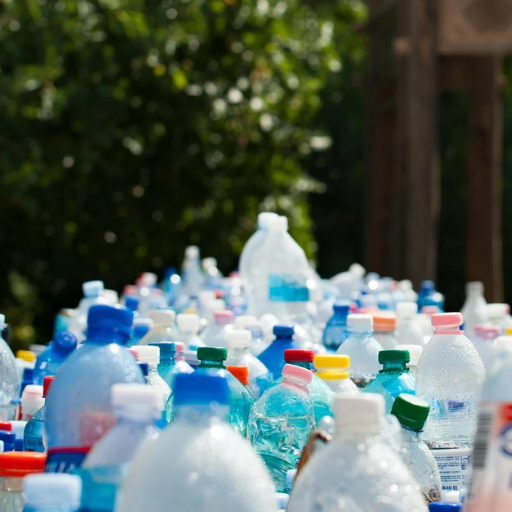
Plastics can be broadly categorized into two main types based on their sources and properties:
Synthetic Plastics: These are derived from non-renewable fossil fuels such as crude oil, natural gas, or coal. Common examples include polyethylene (used in packaging), polypropylene (used in automotive parts), and polystyrene (used in insulation). Synthetic plastics are widely produced and are known for their durability and versatility.
Bioplastics: These are made from renewable biological sources such as corn starch, sugarcane, or vegetable oils. Examples include polylactic acid (PLA) and polyhydroxyalkanoates (PHA). Bioplastics are often marketed as environmentally friendly alternatives due to their potential for biodegradability or lower carbon footprint.
Each type of plastic serves different applications, but their environmental impacts depend greatly on their production processes and disposal methods.
Overview of synthetic plastics and their origins
Synthetic plastics are human-made materials derived primarily from petrochemicals, which are substances obtained from the refining of fossil fuels such as crude oil or natural gas. Early development of synthetic plastics began in the late 19th and early 20th centuries, with Bakelite being one of the first entirely synthetic plastics, invented in 1907. Over time, scientists and industries harnessed chemical processes like polymerization to produce a wide range of plastics, including polyethylene (used in packaging), polypropylene (used in textiles and automotive parts), and polyvinyl chloride (PVC, commonly used in pipes and construction materials).
The origins of synthetic plastics are tied closely to the need for durable and versatile materials that could replace natural resources like ivory, rubber, and shellac. This innovation accelerated during the mid-20th century, especially during World War II, when plastic production expanded to meet demands for military and industrial applications. Synthetic plastics play a critical role in modern society due to their affordability, adaptability, and wide functionality. However, their reliance on non-renewable resources and persistence in the environment pose significant challenges, highlighting the importance of sustainable development and recycling initiatives.
Examining bioplastics and their natural resource components
Bioplastics are an emerging solution aimed at reducing the environmental impact of traditional plastics. Derived from renewable biological resources such as corn starch, sugarcane, vegetable fats, and even algae, bioplastics offer a sustainable alternative to petroleum-based plastics. They are typically categorized into biodegradable and non-biodegradable types, depending on their ability to decompose naturally under specific conditions. Bioplastics significantly reduce carbon emissions during their lifecycle compared to traditional plastics, contributing to efforts against climate change. However, challenges remain, such as the land and water resources required for their production, potential competition with food supply, and limitations in industrial composting infrastructure. By focusing on innovative technologies and balanced resource management, the use of bioplastics can continue to evolve toward a more sustainable future.
Can plastic be considered a sustainable material?
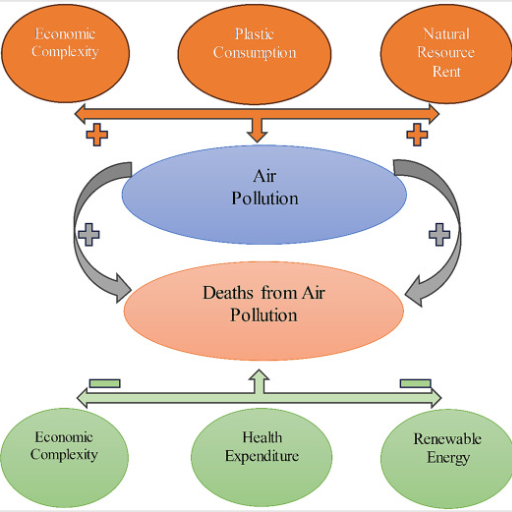
The sustainability of plastic heavily depends on its type, usage, and disposal methods. Traditional plastics, derived from fossil fuels, have significant environmental drawbacks due to their long decomposition timelines and pollution. However, advancements like bioplastics and recycled plastics offer more sustainable alternatives. When used responsibly, recycled plastics can reduce waste and resource consumption, while bioplastics present lower carbon footprints. Ultimately, plastic can contribute to sustainability if production prioritizes renewables, recycling systems are improved, and waste is managed effectively.
Analyzing the lifecycle of plastic products
The lifecycle of plastic products can be divided into five main stages: production, usage, recycling or disposal, environmental impact, and potential repurposing. At the production stage, most plastics are derived from non-renewable fossil fuels, contributing significantly to greenhouse gas emissions. During their usage phase, plastics offer durability, lightweight properties, and versatility, making them irreplaceable in various industries. However, after use, the disposal stage poses challenges due to the non-biodegradable nature of most plastics, leading to land and ocean pollution.
Recycling can partially mitigate these issues by extending the usability of plastic materials and reducing virgin plastic demand, though recycling rates are often limited by contamination and inefficient systems. Furthermore, improperly managed plastic waste becomes a serious pollutant, threatening ecosystems and wildlife. To improve sustainability, innovations like chemical recycling, biodegradable plastics, and circular economy practices are critical. A comprehensive approach addressing production, waste management, and reuse is essential to ensure a sustainable lifecycle for plastic products.
Exploring plastic recycling and waste management strategies
Effective plastic recycling and waste management require a multifaceted approach that addresses technological, behavioral, and infrastructural challenges. Here are the key strategies:
Enhancing Recycling Infrastructure
Improving collection systems and recycling facilities is vital to increase efficiency. Investments in advanced sorting technologies, such as artificial intelligence and robotics, can significantly reduce contamination and boost recycling rates. Simplifying recycling instructions for consumers can also foster greater participation.
Adopting Chemical Recycling
Unlike traditional mechanical recycling, chemical recycling breaks plastics down to their molecular levels, enabling the recovery of raw materials that can be reused in manufacturing. This method shows promise for handling mixed and hard-to-recycle plastics, although its scalability and cost remain under development.
Promoting Biodegradable and Compostable Plastics
Developing biodegradable alternatives can alleviate plastic waste issues when these materials are disposed of properly. These alternatives, designed to decompose under specific conditions, offer a sustainable option for reducing dependency on conventional plastics, particularly in single-use products.
Implementing Extended Producer Responsibility (EPR)
EPR policies hold manufacturers accountable for the entire lifecycle of their products, encouraging the design of materials that are easier to recycle and less harmful to the environment. This approach incentivizes innovation and shared responsibility among stakeholders.
Transitioning to a Circular Economy
At the core of sustainable plastic management is adopting a circular economy. This model emphasizes reducing plastic production, reusing materials, and designing products with recyclability in mind. Collaboration among governments, industries, and consumers is critical to achieving this shift.
By integrating these strategies, societies can reduce plastic pollution and conserve resources more effectively, creating long-term environmental and economic benefits.
What alternatives exist for plastic made from natural resources?
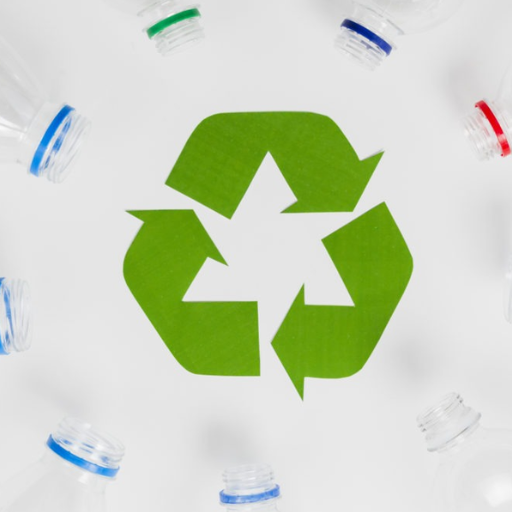
Several innovative alternatives to traditional plastics are emerging, driven by the need for sustainability. Bioplastics derived from renewable materials like cornstarch, sugarcane, or algae offer biodegradable options that reduce reliance on fossil fuels. Products made from polylactic acid (PLA) or polyhydroxyalkanoates (PHA) are increasingly used in packaging and disposable items. Additionally, plant-based composites, such as hemp or bamboo fibers, provide durable options for manufacturing. Advances in material science are also creating edible packaging and water-soluble films as sustainable substitutes. These alternatives are paving the way for more eco-friendly solutions while minimizing environmental impact.
Investigating biodegradable and compostable materials
Biodegradable and compostable materials are innovative solutions aiming to reduce waste and environmental harm. Biodegradable materials break down through natural processes involving microorganisms, while compostable materials decompose into nutrient-rich compost under specific conditions. Common examples include products made from starches, cellulose, or bio-polymers like PLA. These materials are often used for packaging, utensils, and bags, providing eco-friendly alternatives to traditional plastics.
However, it is crucial to recognize the differences and conditions required for effective decomposition. Biodegradable materials may leave behind residues if not fully degraded, while compostable materials require industrial composting facilities with controlled heat and humidity to break down completely. Despite limitations, these materials represent a promising step toward reducing plastic pollution and fostering a circular economy.
Exploring innovations in plastic alternatives
Innovations in plastic alternatives have expanded rapidly, focusing on developing sustainable materials that mimic the utility of conventional plastics while being eco-conscious. Among the most notable advancements are plant-based bioplastics, such as polylactic acid (PLA) and polyhydroxyalkanoates (PHA), which are derived from renewable resources like corn, sugarcane, or algae. These materials can be biodegradable or compostable and are increasingly used in packaging and consumer goods.
Another groundbreaking category includes edible packaging, which utilizes materials like seaweed or rice to create dissolvable wraps and coatings for food. This eliminates waste entirely while being safe for consumption. Additionally, researchers are exploring fungal mycelium and agricultural byproducts to create durable, biodegradable materials that could replace polystyrene and other single-use plastics.
The emergence of advanced recycling techniques, such as chemical recycling, adds to these solutions by breaking down traditional plastics into reusable raw materials, offering a way to tackle existing plastic waste. Innovations in this field continue to push the boundaries of sustainability, promoting materials that align with global efforts to reduce environmental impacts and create a circular economy.
References
Frequently Asked Questions (FAQ)
Q: What does the term “plastic” mean, and is it a natural resource?
A: The word “plastic” refers to a wide range of synthetic or semi-synthetic materials that can be molded into various forms. Plastic is typically made from petroleum products, making it a man-made material rather than a natural resource.
Q: Are there plastics that come from renewable resources?
A: Yes, there are biobased plastics which come from renewable resources such as corn, sugarcane, or other biomass. These plastics are designed to reduce reliance on fossil fuels and decrease the environmental impact of plastic waste.
Q: How is plastic resin created?
A: Plastic resin is created through the polymerization of small molecules known as monomers. This process involves chemical reactions that link these monomers together to form long chains, resulting in various types of plastic resins used in different applications.
Q: What is the role of the plastic industry in global plastic production?
A: The plastic industry plays a significant role in global plastic production by manufacturing a large amount of plastic products used in everyday life, including packaging, containers, and engineering plastic components.
Q: How does plastic waste management address the environmental impact of plastic?
A: Plastic waste management involves strategies to reduce, recycle, and properly dispose of plastic waste. It aims to minimize the environmental impact by reducing plastic in landfills, preventing pollution, and encouraging the recycling of post-consumer plastic waste.
Q: Can you explain the difference between synthetic plastic and biobased plastic?
A: Synthetic plastic, such as Bakelite, is typically made from petroleum-based materials, whereas biobased plastics come from renewable resources. The main difference lies in their raw materials and the environmental impact associated with their production and disposal.
Q: Why are plastic bags a concern for the environment?
A: Plastic bags are a concern because they contribute significantly to plastic waste. They are often used once and discarded, leading to pollution and harm to wildlife. Effective management and reduction of plastic bags are crucial for sustainable environmental practices.
Q: What are plastic pellets, and how are they used?
A: Plastic pellets are small granules of plastic resin used as the raw material in the manufacturing of plastic products. They are melted and molded into various forms, such as plastic containers and other solid plastic items.
Q: What was the first synthetic plastic, and how has it influenced the plastic age?
A: The first synthetic plastic was Bakelite, invented in the early 20th century. It marked the beginning of the plastic age, leading to the development of numerous plastic materials and widespread use in various industries.
Q: How does the amount of plastic used impact global sustainability efforts?
A: The large amount of plastic used globally poses challenges for sustainability, as it contributes to resource depletion and environmental pollution. Efforts to reduce plastic consumption, improve recycling, and innovate with biobased plastics are essential for achieving sustainable development goals.

